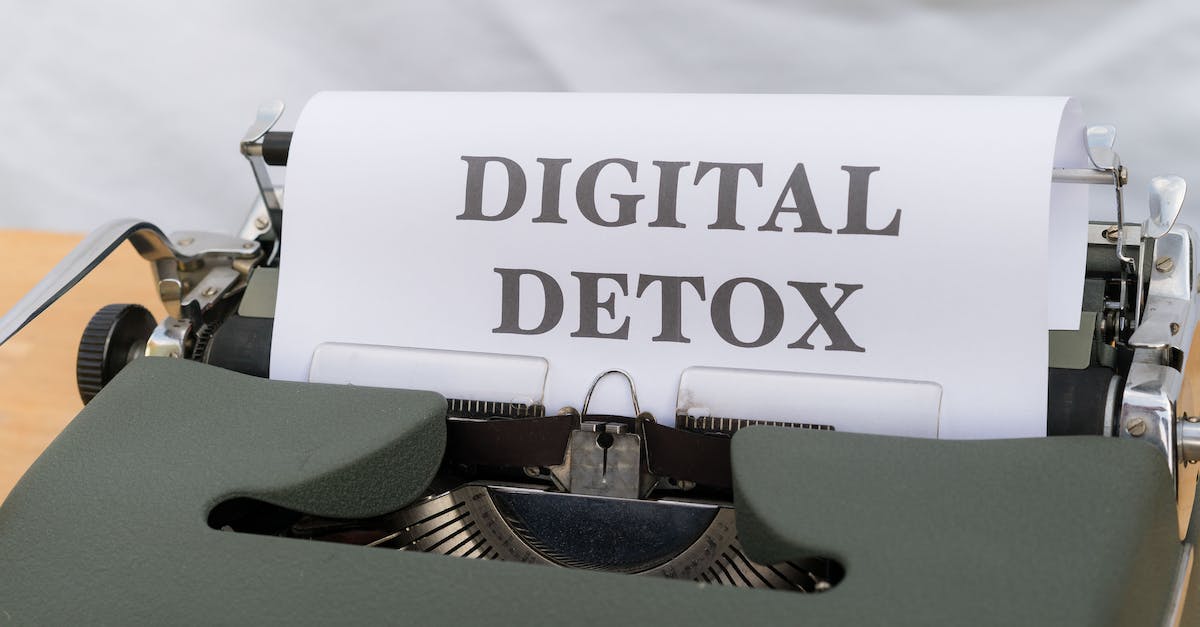Mindful Technology Use: Balancing Connectivity And Well-being

Introduction
In today's fast-paced world, technology plays a crucial role in our daily lives. From smartphones to smart homes, we are more connected than ever before. However, with this constant connectivity comes the risk of technology taking over our lives and compromising our well-being. This article explores the concept of mindful technology use and offers tips on how to strike a balance between staying connected and prioritizing our mental and physical health.
The Impact of Constant Connectivity
Our dependence on technology has become a double-edged sword. While it has undoubtedly made our lives easier and more convenient, it has also blurred the lines between work and personal life. We find ourselves constantly checking emails and notifications, even during our leisure time. This constant connectivity can lead to stress, anxiety, and a sense of being overwhelmed.
Research has shown that excessive screen time can have detrimental effects on our mental and physical health. Excessive smartphone use has been linked to poor sleep quality, increased stress levels, and decreased attention spans. Social media, a major component of our modern digital lives, can also contribute to feelings of loneliness, inadequacy, and depression.
The Importance of Mindful Technology Use
Mindful technology use is all about being intentional and aware of how we engage with technology. It involves using technology in a way that enhances our well-being rather than detracting from it. Mindful technology use allows us to regain control of our digital lives and create a healthy balance between the virtual world and the real world.
By practicing mindful technology use, we can:
-
Improve our mental health: Setting boundaries with technology can help reduce stress and anxiety. By taking breaks from screens and engaging in offline activities, we can improve our focus, concentration, and overall well-being.
-
Foster better relationships: Constant smartphone use can impact our interpersonal relationships. Being present in the moment and actively listening to others without distractions creates stronger connections and deeper relationships.
-
Enhance productivity: Mindful technology use involves prioritizing tasks and minimizing distractions. By setting clear goals and using technology as a tool rather than a constant source of diversion, we can increase our productivity and efficiency.
Tips for Mindful Technology Use
To incorporate mindful technology use into our daily lives, here are some practical tips:
Set boundaries
Set specific time limits for using technology and stick to them. Designate certain hours of the day as tech-free zones, such as during meals or before bed. Creating a schedule and sticking to it can help establish healthy habits.
Practice digital detox
Take regular breaks from screens. Consider going on a digital detox once a week or even for a whole day. Use this time to engage in activities that promote well-being, such as spending time in nature, reading a book, or practicing mindfulness.
Be mindful of notifications
Disable unnecessary notifications that constantly grab your attention. Choose which apps and contacts are truly important and allow notifications only from them. This way, you can minimize distractions and be more present in the moment.
Prioritize self-care
Make self-care a priority by engaging in activities that promote physical and mental well-being. Exercise regularly, practice meditation, or engage in hobbies that bring you joy and relaxation. By taking care of yourself, you'll be better equipped to handle the stresses of the digital world.
Foster offline connections
Focus on building and nurturing offline relationships. Make time to meet friends and loved ones in person, have meaningful conversations, and create lasting memories. Investing in genuine face-to-face interactions can enrich your life and provide a much-needed break from the digital realm.
Conclusion
Technology is undoubtedly a powerful tool that has revolutionized the way we live and connect with others. However, it's important to approach technology with mindfulness and intention. By practicing mindful technology use, we can create a healthy balance between staying connected and prioritizing our well-being. Setting boundaries, taking regular digital detoxes, and investing in offline connections are just a few ways we can regain control of our digital lives and foster a healthier relationship with technology.